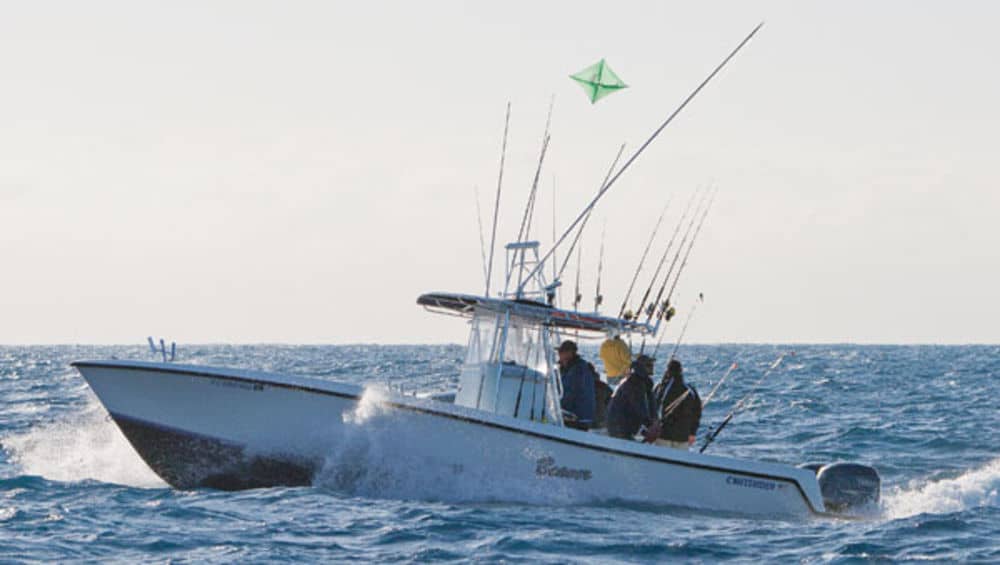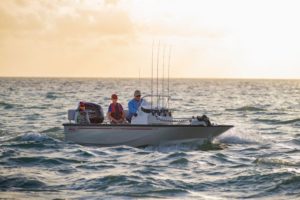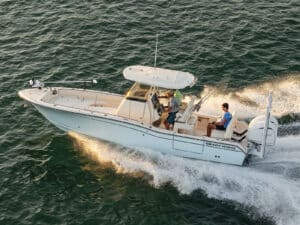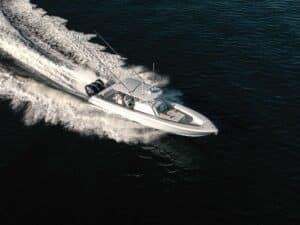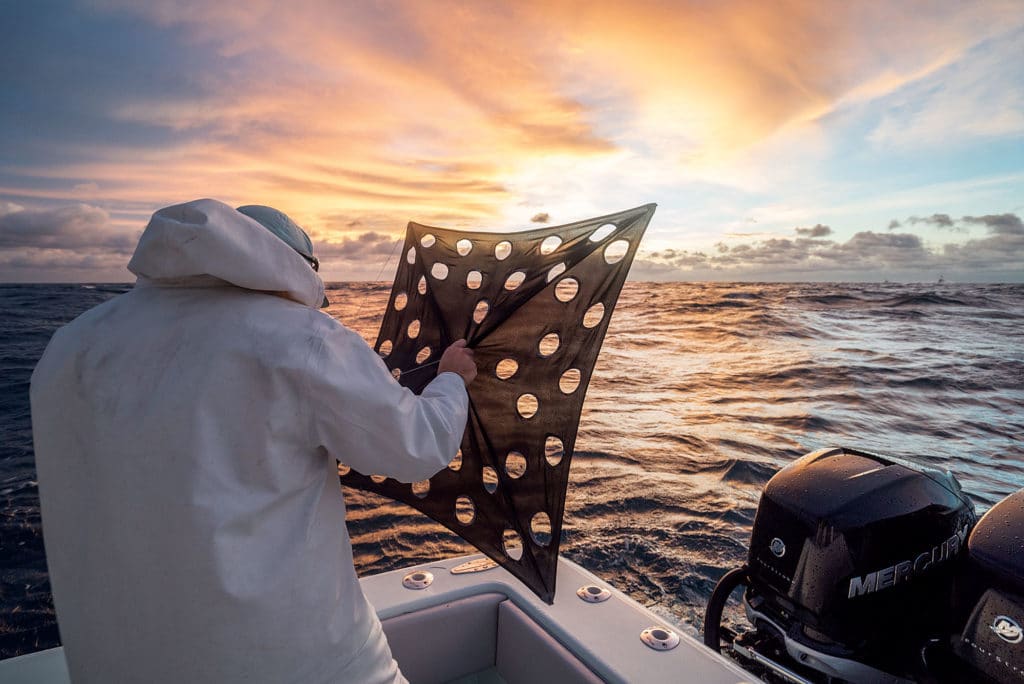
No technique proves more effective than kite-fishing for presenting baits along the frothy transition between air and ocean. It not only stands as the No. 1 method among tournament sailfish teams in South Florida, but it also proves productive for kingfish, mahimahi, tuna and other species.
Kite-fishing requires lots of specialized equipment, a high level of skill, and an attentive, hard-working crew, as well as a boat that’s designed for the job. While traditional sport-fishers certainly prove kite-worthy, big center consoles — boats with 37 to 42 feet of LOA or more and quad outboards — offer unique features that make them ideal platforms for kite-fishing. Brands such as Boston Whaler, Contender, HydraSports, Invincible, Jupiter, Regulator, Sea Vee, Yellowfin and others offer such models.
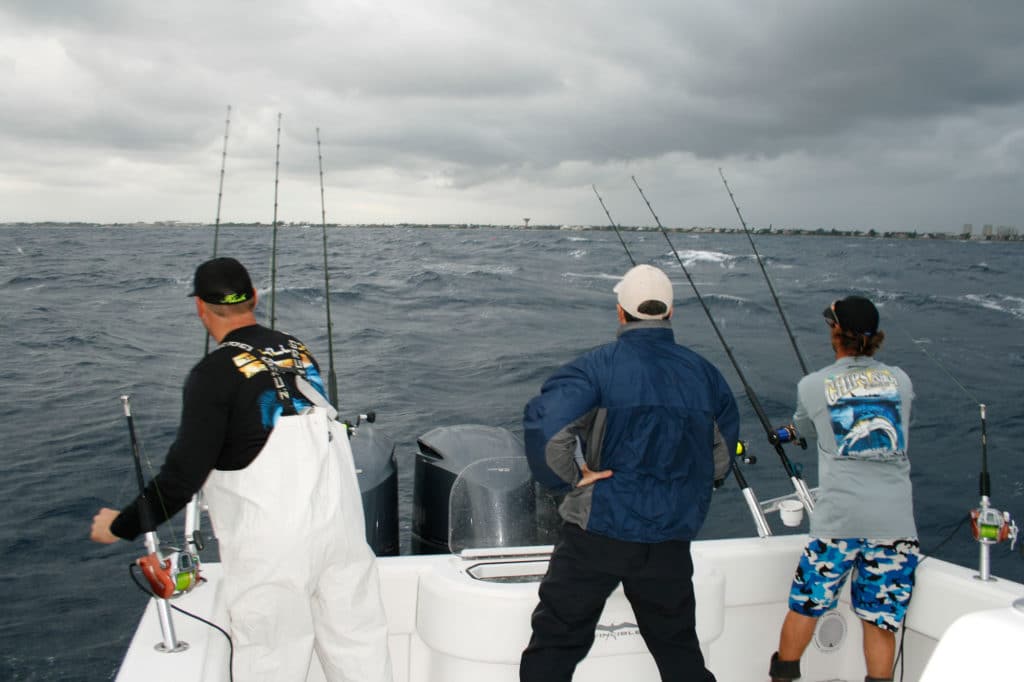
These boats fish anglers safely and comfortably in the breezy, often-lumpy conditions that accompany and, indeed, are required for most effectively flying kites. The boat layouts offer 360-degree access along the rail for tending lines and battling fish. The size of the boats also allows tournament teams to maximize their live-bait capacity. Having four outboards helps immensely in quickly moving from one area to another and in positioning the boat while power-drifting in the Gulf Stream and while chasing fish.
Proper rigging hones the effectiveness of these boats, according to tournament anglers such as Jimmy Lambert, who fishes aboard his Reel Tight, an Invincible 42, which was rigged at the factory to his specifications and is powered by quad Mercury 350 Verados.
“The crew still needs to know their stuff while deploying and tending lines, but good rigging helps make things go smoother and easier,” says Lambert, who kite-fishes 50 to 60 days a year.
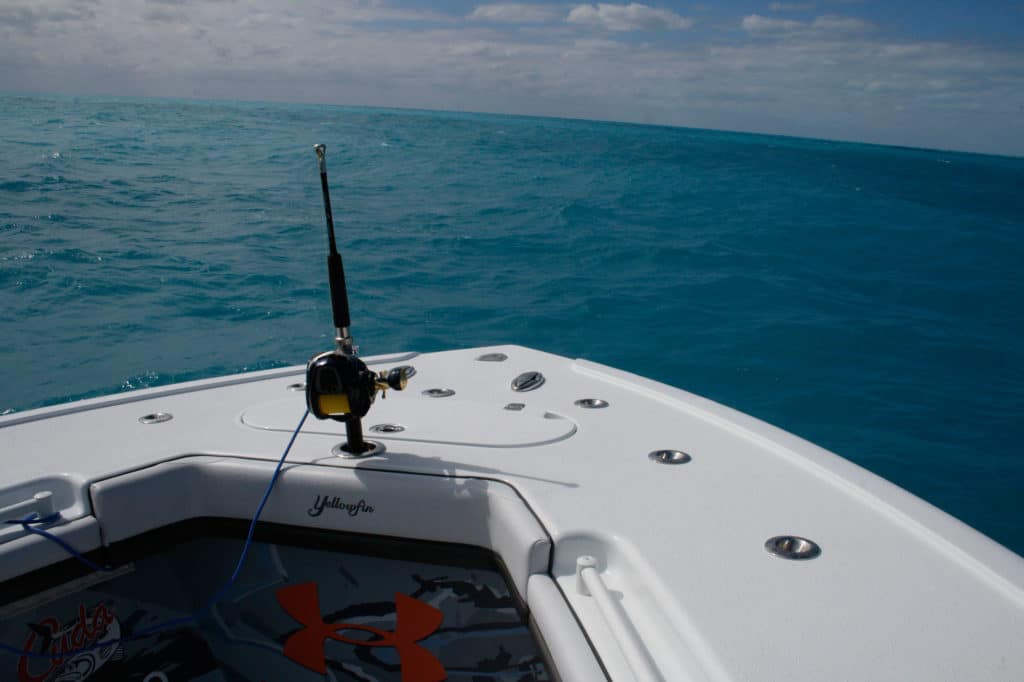
How to Position the Boat
There are two ways to position the boat while kite-fishing: beam-to or bow-to the seas. You need to keep this in mind when rigging your boat, says Capt. Art Sapp, who kite-fishes on the sailfish-tournament circuit aboard Liquid, his SeaVee 390Z powered by quad 350 Verados. “Keeping the bow pointed into the seas by using engine power or a sea anchor is utilized in rougher conditions,” Sapp points out. This helps keep the deck more comfortable but limits the spread to two kites — one from each stern quarter.
Kite-fishing with the beam to the seas is practiced more commonly when breezes are milder. Some boats might need some engine help to stay perpendicular to the wind. “It allows you to run three kite lines — one each in the bow, midship and stern — for a greater spread and more chance of bites,” Sapp explains.
With this in mind, consider these five rigging tips from two kite-fishing-tournament pros.

1) Live-Bait Selection
Having a selection of live-bait species to choose from in good supply ranks as one of the most important aspects of kite-fishing. Multiple high-capacity livewells is the solution.
Sapp, for example, has equipped Liquid with four huge livewells. He loads an 80-gallon transom well with threadfin herring, an 80-gallon well under the aft deck with goggle-eyes, a 60-gallon tank under the aft deck with sardines, and an 80-gallon well under the foredeck with pilchards.
To ensure that the bait stays healthy, each tank aboard Reel Tight is served by two pumps: one 2,000 and one 1,500 gph. “We always have a backup, and I can change the volume by choosing one pump or the other,” Lambert says.
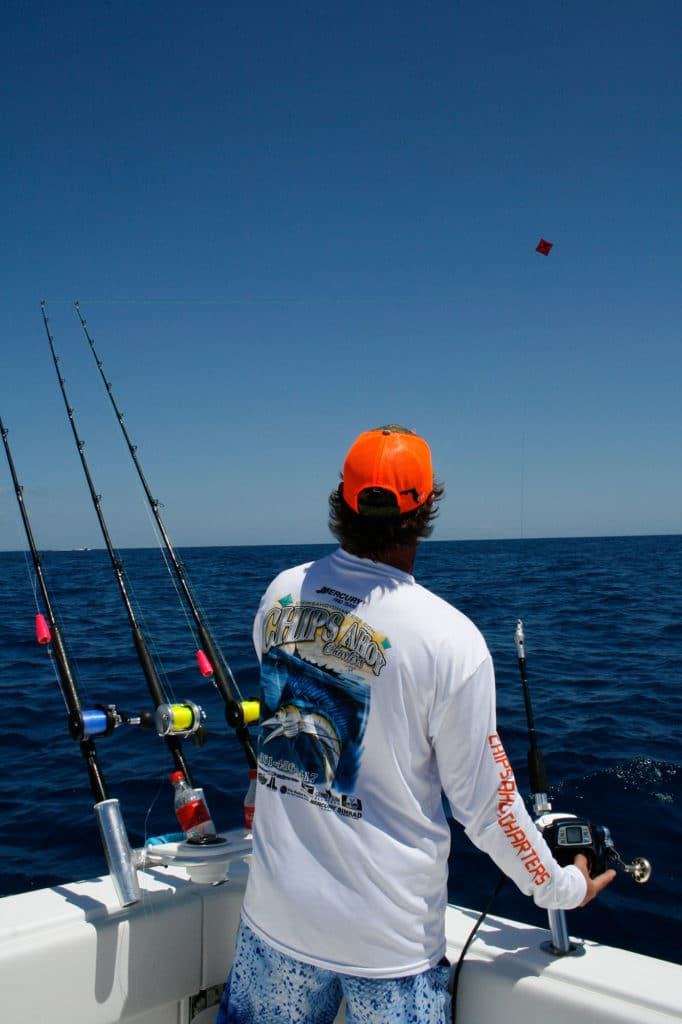
2) More Rod Holders is Better
The style and position of gunwale rod holders is often a matter of personal preference, but one rule seems universal: More is better. Aboard Liquid, for example, there are 19 gunwale rod holders along each side. If that seems excessive, remember that the boat fishes as many three kites, with three lines per kite.
“Having multiple rod holders lets you align each fishing line with the angle at which the kite is flying,” Sapp explains. “The straighter the angle, the smoother the line will glide through the ring attached to the release clip.”
Sapp’s 390Z is equipped with 30-degree rod holders, except for those nearing the bow, which transition to 15 degrees because of limited space inside the forward inwales.
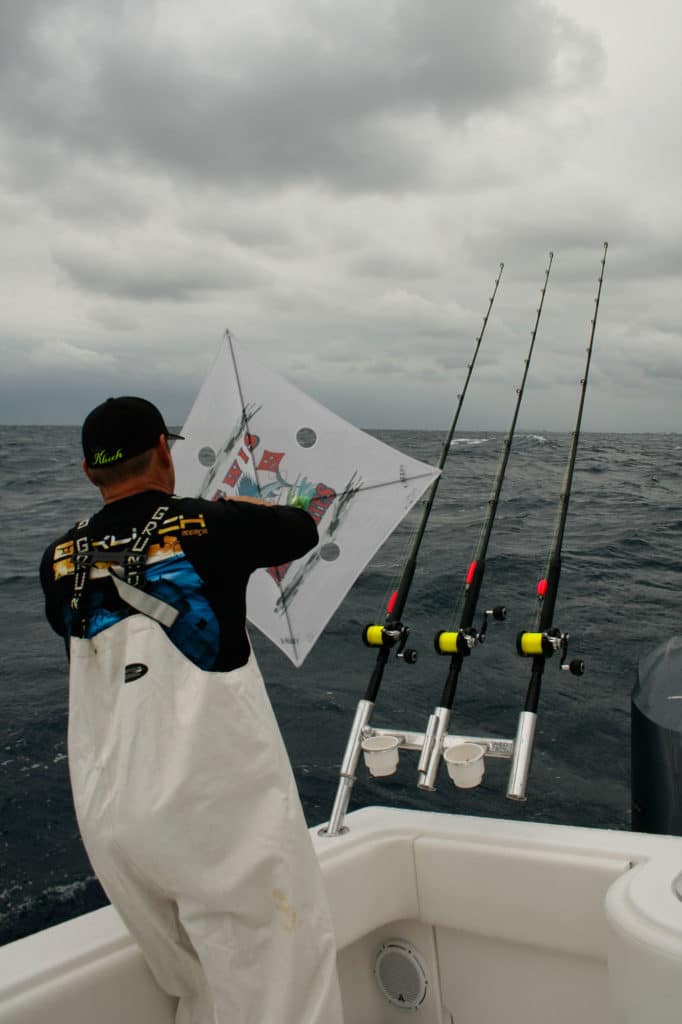
Lambert’s Invincible 42 has a 0-degree gunwale rod holder on each side of the forward gunwales for the kite rod and reel, but otherwise provides 15-degree rod holders forward and 30-degree for the rest, spaced 18 inches apart.
The rod holders are perpendicular to the centerline midship, but they gradually angle toward the bow along the forward gunwales and toward the stern along the aft gunwales. Tridents feature a cluster of three rod holders with a gimbal tube that inserts into a gunwale rod holder. While not an integral part of the boat rigging, tridents let you group three rods together to more easily work them while fishing kites. Sapp uses them on each corner while fishing with the bow into the seas because they tend to consolidate obstacles along the gunwale to just two points while battling a fish.
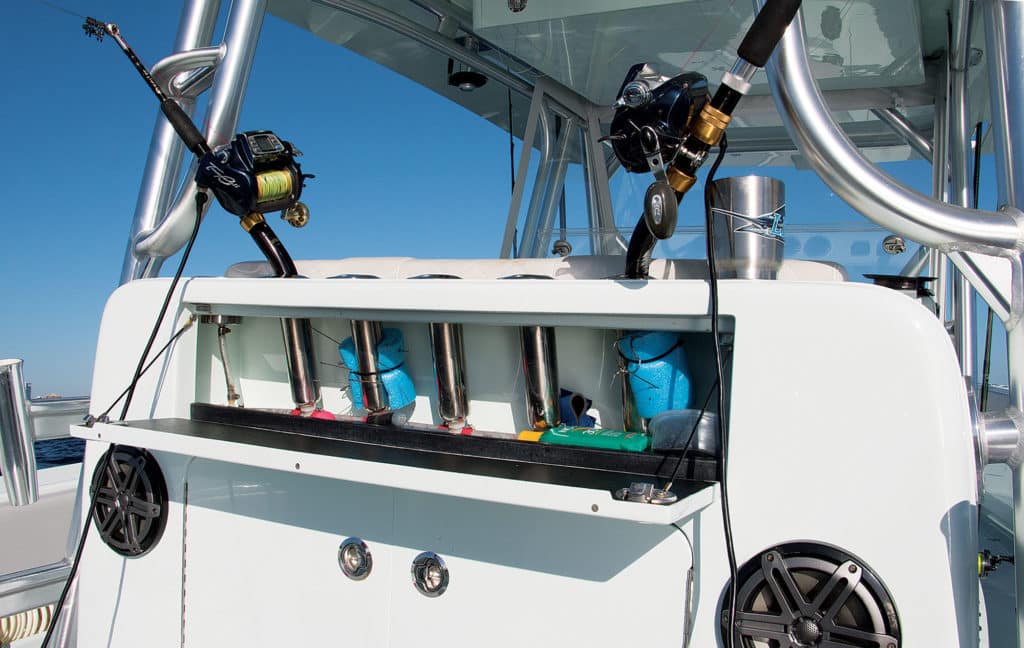
3) Leaning Posts in the Cockpit for Kite-Fishing
Many boats use leaning posts in the cockpit for working lines while kite-fishing with the bow to the seas. This totally eliminates obstacles along the gunwale. “It also keeps the guys working the kite lines away from the in-deck livewells,” says Sapp. This facilitates access to the wells for the crew assigned to rigging baits, he adds.
4) Power Outlets for Electric Reels
Electric kite reels from companies such as Daiwa, Hooker Electric and Shimano have become ubiquitous for deploying and retrieving kites, and that dictates the need for onboard power outlets. The most common socket-and-plug setup is the Hubbell Twist-Lock Electric Fishing Reel Device, which is DC-rated and includes a locking plug, female connector and weatherproof plate. All pieces are rated at 28V at 30 amps and compatible with 12, 24 and 32V DC reel systems. (This particular Hubbell Twist Lock DC plug-and-socket system is not designed for AC shore-power applications.) Both Lambert and Sapp equip their boats with a pair of sockets at the bow, a pair amidships, and a pair in the stern quarters. Mounting these under the coamings helps minimize exposure to spray.
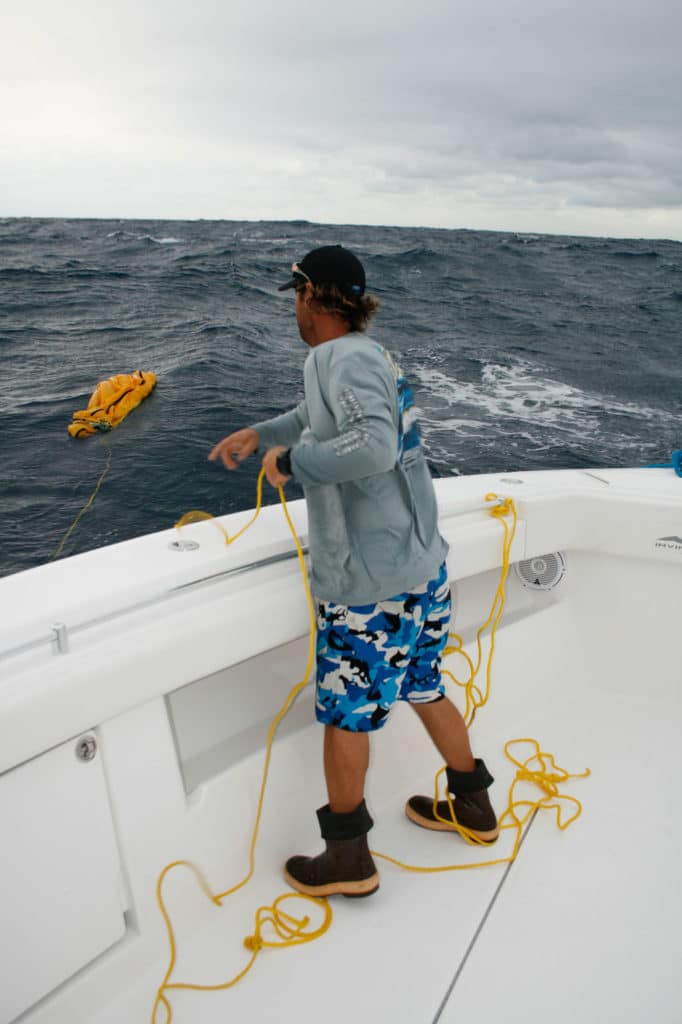
5) Kite, Balloon and Tank Stowage On Board
Stowing kites, as well as helium tanks and balloons (needed when winds are light), poses a challenge when racing from one spot to another during the heat of a tournament. Both Lambert and Sapp use a suction-cup system such as the Ultimate Scuba Tank Holder to secure the heavy helium tanks. Lambert stows his tank vertically inside the console, which he custom-ordered with a side door that’s 6 inches wider than standard so he could also stow kites and inflated balloons inside.
Sapp uses a forward stowage locker to keep tanks (horizontally) and balloons. The 390Z is available with a unique and easy-to-access kite-stowage cubby above the console, where you might normally find an overhead electronics box. The compartment aboard Liquid holds up to 10 kites.
For more kite-fishing content, click the photo below to see more tips on the skill.
